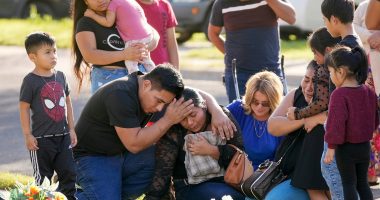
Times Insider explains who we are and what we do, and delivers behind-the-scenes insights into how our journalism comes together.
Like many reporters on The New York Times’s National desk, I have been covering the coronavirus pandemic for nearly a year. I have researched record-breaking case numbers in different regions, calculated the rate per minute at which Americans were dying of Covid-19 complications and, periodically, interviewed relatives or friends grieving a loved one. I knew, as well as most, the awful scope of the toll. At least I thought I did.
So it came as a surprise to find myself often fighting back tears as I reported, with a team of colleagues, on a special project by the National desk: examining the devastation the virus has inflicted across the country through a closer look at the lives lost on a single January day. I had interviewed psychologists about how “psychic numbing” made it difficult for the human brain to process coronavirus deaths on the scale at which they were occurring. I just hadn’t realized it applied to me.
But finding a way through the natural defense mechanism that dulls our collective response to the pandemic was the point of this assignment. As we neared a wrenching record — 100,000 virus deaths in just five weeks, surpassing 400,000 since the beginning of the pandemic — our editors wanted us to go deep rather than wide. Julie Bloom, a deputy National editor who edited the piece, wrote to us in a Jan. 8 email that through the lens of one day, we would try to “focus on the human side of this loss.”
Mitch Smith, a National correspondent who leads the team of reporters tracking virus cases and deaths across the country, started us off with a list of places where virus deaths per capita had been especially high the previous week. They included urban counties and rural ones, and were scattered across every corner of the nation — another reason, our reporting suggested, that the cumulative weight of these deaths may not have hit home yet for many Americans.
Then Susan Beachy, a stalwart of our research staff, began combing through local news outlets for obituaries. She created a spreadsheet, organized by day, for that first week of January. To help supply us with contact information for surviving family members, she also scrolled through social media, perhaps the most emotionally fraught task of this project. “Seeing photos of birthdays, anniversaries and vacations — and even just funny selfies — broke my heart again and again,” she texted me when I asked her what that was like.
Jan. 27, 2021, 5:04 a.m. ET
Based in part on a sad story from an Atlanta news report, we chose Jan. 4 as our date. To illustrate the story, Heather Casey, a photo editor, asked us to request photographs from the family members of victims we were featuring.
All of us had covered tragic events like mass shootings and natural disasters that required us to interview relatives of lost loved ones. But as my colleague Audra D. S. Burch noted when we spoke after deadline, the scale was different this time. More than 2,000 people in the United States died a Covid-related death that day. So for every grieving family member we spoke to about a Covid victim on that day, we knew there were thousands more.
“I felt like these were especially fragile conversations,” Audra told me, “because they were about an individual death, but in some ways, they were also about, ‘How did we get here?’”
Along with my own interviews, I was assigned to weave together reports from Audra; Manny Fernandez, our Los Angeles bureau chief; Thomas Fuller, our San Francisco bureau chief; and Steven Moity, a news assistant, into one narrative. On Jan. 14, Thomas wrote to let me know he would send a file the next morning from an interview he had conducted with a woman who had lost two sisters to the virus and whose only living sister had just been hospitalized with Covid.
“I was dreading the idea today that the third sister would perish while I was on the phone with the sole survivor,” he wrote, in a message that made it impossible to stay numb.
Often it was the memories our interviewees shared of the dead that got to me: a daughter’s unabashed pride in her father’s photography career, another’s recollection of her mother in a moment of impulsive generosity. The family member from the story in Atlanta that had drawn us to choose Jan. 4 did not respond to our efforts to get in touch. But that was OK.
“Sadly,” said Marc Lacey, the editor of the National desk, who conceived of the idea, “we could have picked any day.”
As our daily coverage of the virus continues, I find myself again caught up in how the numbers are trending. Have cases peaked? Will the new variants lead to a surge? The country is still averaging more than 3,000 Covid deaths each day. But now when I report those numbers, I also think of Elisha Romrell, a 23-year-old with Down syndrome, who died Jan. 4 of Covid complications. Her father, Calvin Romrell, has missed feeling her hand in his.
“That’s what I have echoing in my memory,” Mr. Romrell told me.
It echoes in mine too.
Source: | This article originally belongs to Nytimes.com









